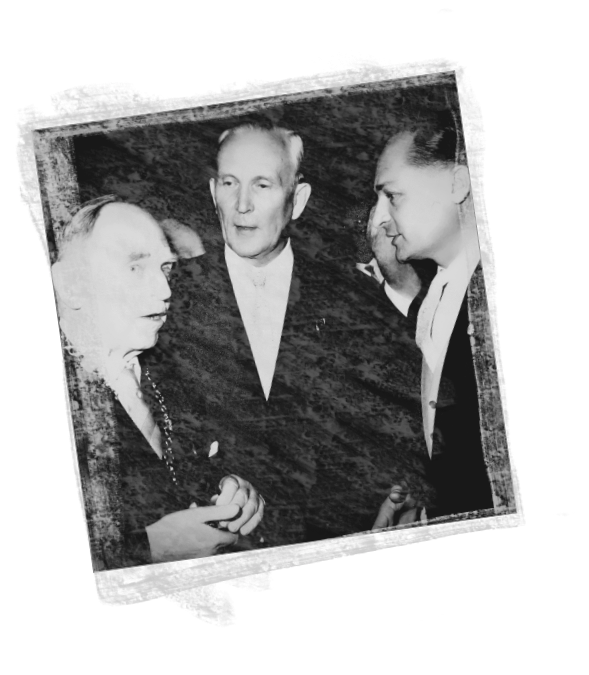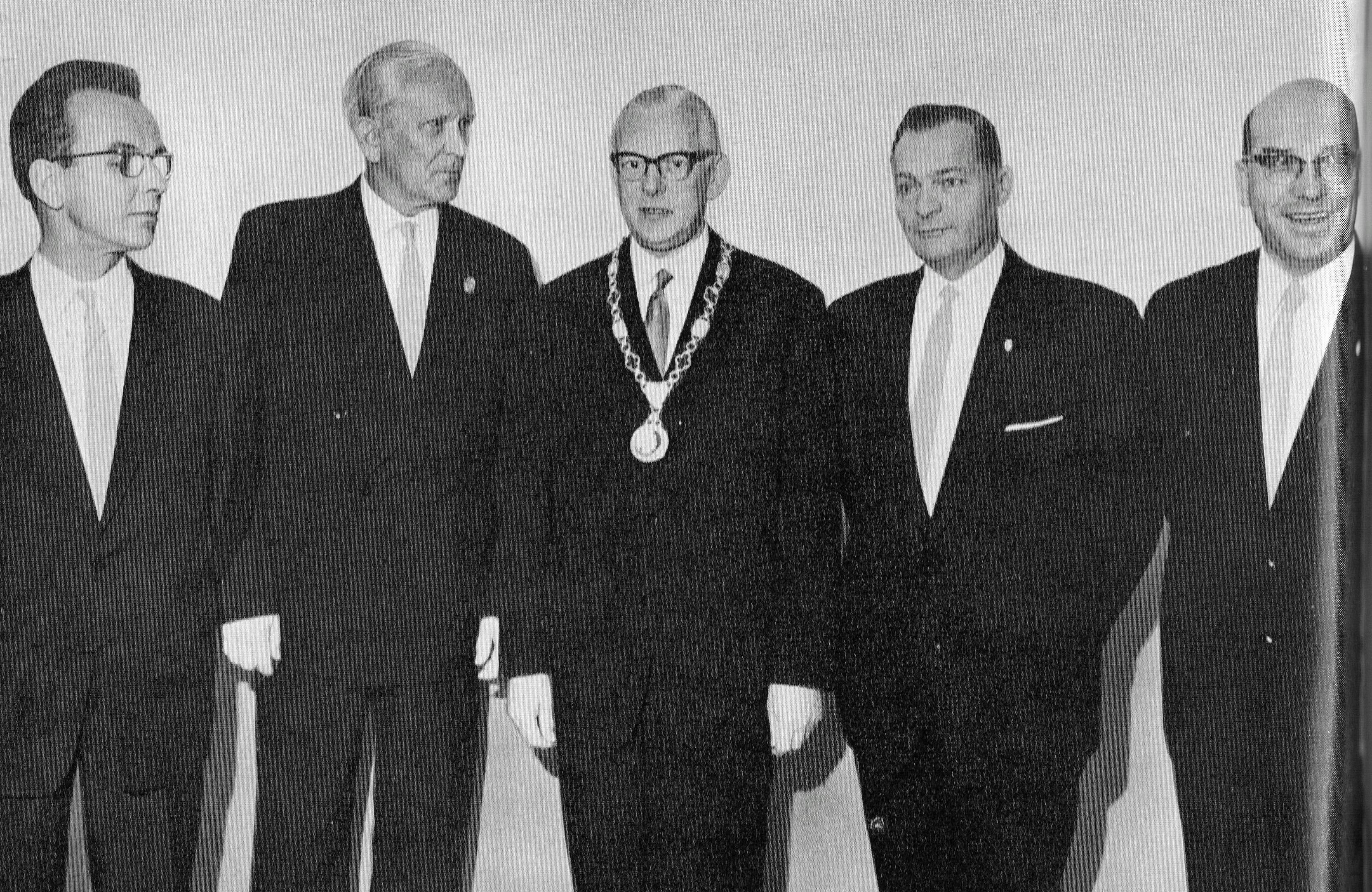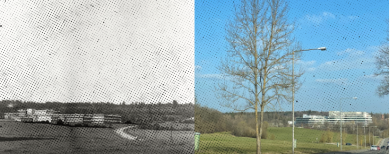New research fields, new structure
In 1960, the Max Planck Institute for Metals Research establishes its first external unit at the Nuclear Research Centre in Karlsruhe. In 1965, following Werner Köster’s retirement, a Board of Directors is appointed and the Institute is reorganized, as a result of which it gains three Sub-Institutes. The MPI-MF establishes a second external unit, the research unit for ultra-pure substances in Schwäbisch Gmünd. The first electron microscope is set up in Stuttgart in 1968.

Timeline
1960: First external unit at the Nuclear Research Centre in Karlsruhe
1965: Werner Köster retires; New Board of Directors
1967: Research unit for ultra-pure substances in Schwäbisch Gmünd
1968: The first high-voltage electron microscope
Timeline
1960: First external unit at the Nuclear Research Centre in Karlsruhe
1965: Werner Köster retires; New Board of Directors
1967: Research unit for ultra-pure substances in Schwäbisch Gmünd
1968: The first high-voltage electron microscope


External unit in Karlsruhe
In 1960, the Department of Special Metals establishes the first external unit of the MPI for Metals Research at the Nuclear Research Centre in Karlsruhe. Jörg Diehl is appointed its Director. A cryogenic irradiation facility is built at the FR2 research reactor, funded by the Federal Ministry of Nuclear Energy and Water Management. Staff from the Institute conduct irradiation experiments on special metals at the reactor until it is decommissioned on age grounds at the end of 1981.
Reorganization at the end of an era
After Richard Glocker’s retirement in 1960, and following an interim solution, the Institute for Metal Physics and the Institute for Applied Metallurgy are merged into the Institute for Metallurgy under the direction of Werner Köster at the end of 1962. Köster’s retirement at the end of October 1965 marks the end of an era.
The new statutes of 1965 stipulate that the MPI-MF must be managed by a Board of Directors; a new Managing Director is appointed every three years.
Hans-Jürgen Engell is appointed the new Director of the Institute of Metallurgy and also takes the metallurgy chair at TH Stuttgart. The Department of Special Metals is accorded the status of a separate Institute directed by Erich Gebhardt. The Departments led by Ulrich Dehlinger and Alfred Seeger are merged into the Institute of Physics. Seeger is appointed its Director; Dehlinger retires in 1969.


Ultra-pure substances – a new research field
The MPI-MF’s second external unit is established in Schwäbisch Gmünd, one of the locations to which the Institute was evacuated during World War II. In 1967, the MPI-MF establishes a research unit for ultra-pure substances at the Research Institute for Precious Metals and Metals Chemistry located there. It is formed from the working groups created by the Institute during the 1960s to advance research into ultra-pure metals, a field that is rapidly gaining in importance.
The new research unit is formed from the analytical working group at the Institute for Special Metals. Working conditions in Schwäbisch Gmünd are excellent and include a low-dust laboratory. Günther Tölg becomes its Director. Based on a resolution passed by the MPG, the facility is relocated to Dortmund in 1984 and renamed the “Laboratorium für Reinststoffanalytik” (Laboratory for the Analysis of Ultra-Pure Substances). The facility closes its doors in 1994 following Tölg’s retirement.
During the 1960s, the radiography imaging technique in which the MPI-MF performed pioneering work in the 1920s is complemented by high-voltage electron microscopy. “Transmission electron microscopy” facilitates the analysis of minuscule atomic defects. However, this requires a special device that can also “penetrate” denser samples. In 1968, the MPI-MF acquires the first high-voltage electron microscope in Germany with the support of the Volkswagenwerk Foundation; the microscope is a HU 650 manufactured by Hitachi.
An extension has to be built on to the building in Seestraße 75 in order to house it; this building is inaugurated in November 1968. The new premises also house an exceptionally high-resolution electron microscope, which is used by the metallurgical analysis working group formed in 1965. The MPI for Metals Research continues its pioneering work in the area of innovative research processes.









